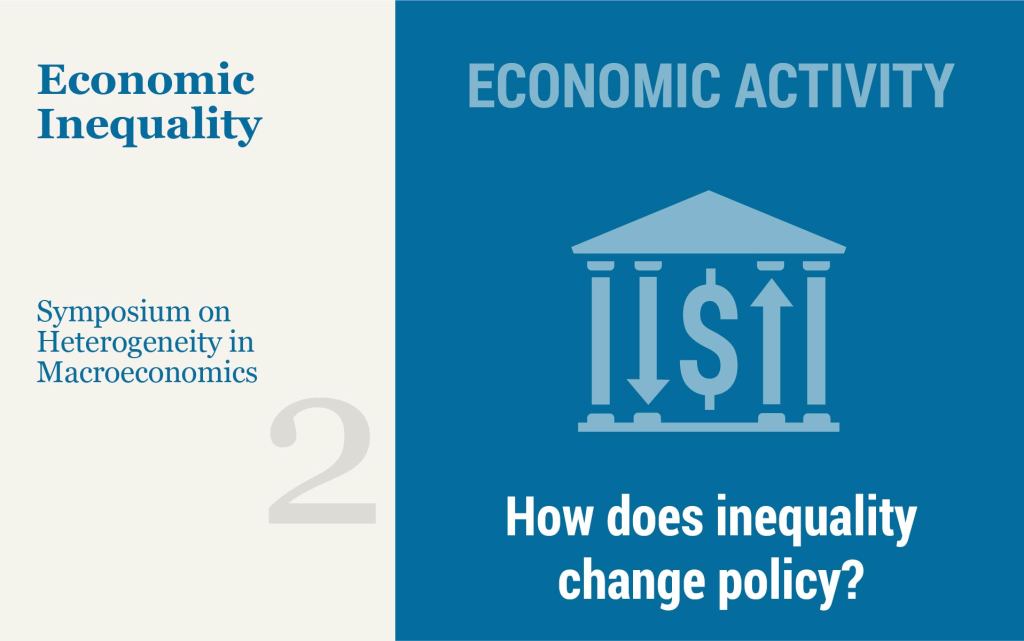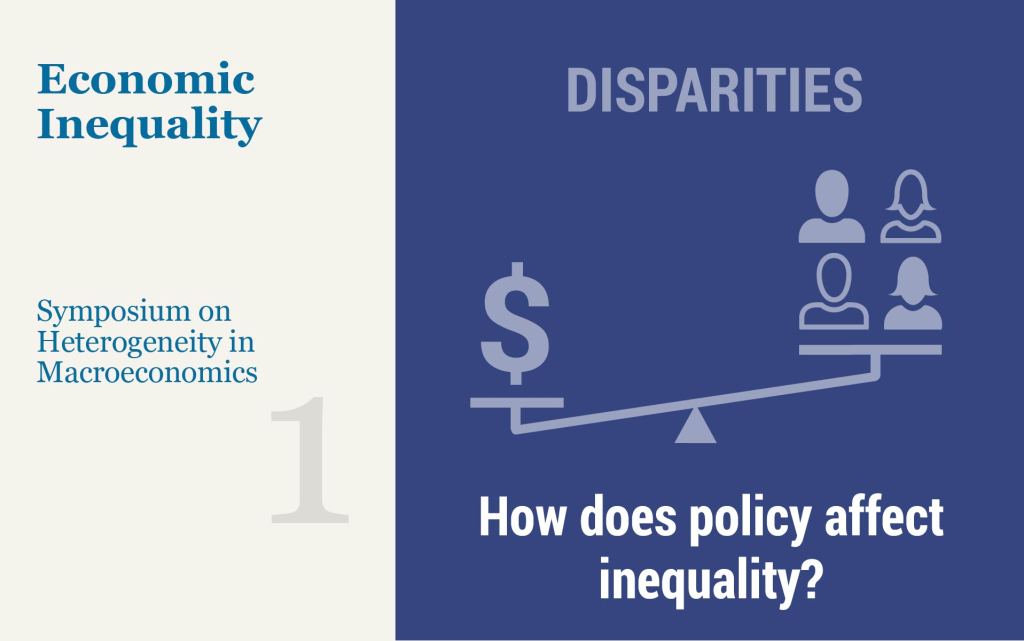The Credibility of Government Policies: Conference in Honor of Guillermo Calvo

Guillermo Calvo is a leading member of a group of economists who revolutionized macroeconomics by modeling how incentives and the anticipation of future policies affect aggregate outcomes. In celebration of his work, a conference was held in his honor at the Federal Reserve Bank of New York and at Columbia University on February 22-24, 2023. The conference program can be found on the event website. A longer version of this post with additional detail on the proceedings can be found here.
The Effect of Inequality on the Transmission of Monetary and Fiscal Policy

Monetary policy can have a meaningful impact on inequality, as recent theoretical and empirical studies suggest. In light of this, how should policy be conducted? And how does inequality affect the transmission of monetary policy? These are the topics covered in the second part of the recent symposium on “Heterogeneity in Macroeconomics: Implications for Policy,” hosted by the new Applied Macroeconomics and Econometrics Center (AMEC) of the New York Fed on November 12.
The Effect of Monetary and Fiscal Policy on Inequality

How does accounting for households’ heterogeneity—and in particular inequality in income and wealth—change our approach to macroeconomics? What are the effects of monetary and fiscal policy on inequality, and what did we learn in this regard from the COVID-19 pandemic? What are the implications of inequality for the transmission of monetary policy, and its ability to stabilize the economy? These are some of the questions that were debated at a recent symposium on “Heterogeneity in Macroeconomics: Implications for Policy” organized by the new Applied Macroeconomics and Econometrics Center (AMEC) of the New York Fed on November 12.
Is the United States Relying on Foreign Investors to Finance Its Bigger Budget Deficit?

The fiscal packages passed in 2020 and 2021 to help the economy cope with the pandemic caused a dramatic increase in federal government borrowing. One might have expected that foreign investors were important buyers of this new debt, but that was not the case. They were instead net sellers of Treasury securities. Still, the amount of money flowing into the United States increased last year, which helped fund the government’s borrowing, if only indirectly. The upturn in inflows, though, was quite modest as a surge in domestic personal saving largely covered the government’s heightened borrowing needs. How the reliance on foreign funds changes in 2021, when the government deficit will again be quite elevated, will depend on whether domestic personal saving remains high.
What Is behind the Global Jump in Personal Saving during the Pandemic?

Household saving has soared in the United States and other high-income countries during the COVID-19 pandemic, despite widespread declines in wages and other private income streams. This post highlights the role of fiscal policy in driving the saving boom, through stepped-up social benefits and other income support measures. Indeed, in the United States, Japan, and Canada, government assistance has pushed household income above its pre-pandemic trajectory. We argue that the larger scale of government assistance in these countries helps explain why saving in these countries has risen more strongly than in the euro area. Going forward, how freely households spend out of their newly accumulated savings will be a key factor determining the strength of economic recoveries.
A New Reserves Regime? COVID‑19 and the Federal Reserve Balance Sheet
Aggregate reserves declined from nearly $3 trillion in August 2014 to $1.4 trillion in mid-September 2019, as the Federal Reserve normalized its balance sheet. This decline came to a halt in September 2019 when the Federal Reserve responded to turmoil in short-term money markets, with reserves fluctuating around $1.6 trillion in the early months of 2020. Then, in response to the COVID-19 pandemic, the Federal Reserve dramatically expanded its balance sheet, both directly, through outright purchases and repurchase agreements, and indirectly, as a consequence of the facilities to support market functioning and the flow of credit to the real economy. In this post, we characterize the increase in reserves between March and June 2020, describing changes to the distribution and concentration of reserves.
Consumers Increasingly Expect Additional Government Support amid COVID‑19 Pandemic

The New York Fed’s Center for Microeconomic Data released results today from its April 2020 SCE Public Policy Survey, which provides information on consumers’ expectations regarding future changes to a wide range of fiscal and social insurance policies and the potential impact of these changes on their households. These data have been collected every four months since October 2015 as part of our Survey of Consumer Expectations (SCE). Given the ongoing COVID-19 pandemic, households face significant uncertainty about their personal situations and the general economic environment when forming plans and making decisions. Tracking individuals’ subjective beliefs about future government policy changes is important for understanding and predicting their behavior in terms of spending and labor supply, which will be crucial in forecasting the economic recovery in the months ahead.
At the New York Fed: Chapter 9 and Alternatives for Distressed Municipalities and States
On Tuesday, April 14, the Federal Reserve Bank of New York hosted an all-day workshop entitled Chapter 9 and Alternatives for Distressed Municipalities and States. The workshop was jointly organized and sponsored by the Volcker Alliance and George Mason University’s State and Local Government Leadership Center. The event brought together key experts, practitioners, and researchers on the subject of fiscal distress at the state and local level. The aim of the session was to foster discussion on the role of Chapter 9 of the U.S. Bankruptcy Code, alternatives for distressed governments, and strategies to avoid stress and achieve good fiscal outcomes.










 RSS Feed
RSS Feed Follow Liberty Street Economics
Follow Liberty Street Economics